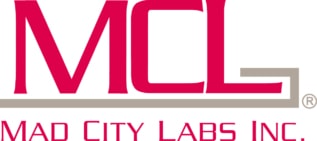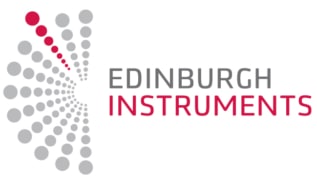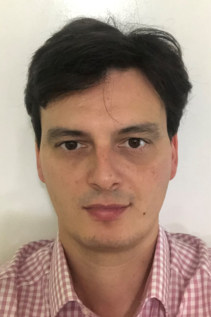
When it comes to scientific conferences, we’ve all been affected by the restrictions from the COVID-19 pandemic. But even when the pandemic is over, as it surely will be one day, I don’t think we’ll ever entirely go back to massive scientific conferences as we knew them.
Sending thousands of people halfway round the world at great expense to mix in stuffy rooms increasingly seems a thing of the past, not least on the grounds of cost and pollution. What’s more, we can do so much more online.
Sure, it’ll take time to figure out what works best, but there are some intriguing developments already under way. In the new issue of Physics World, for example, you can read about a recent online conference in attophysics that deliberately set out to create scientific “battles”. More importantly, online conferences can make physics meetings more accessible and open.
If you’re a member of the Institute of Physics, you can read the whole of Physics World magazine every month via our digital apps for iOS, Android and Web browsers. Let us know what you think about the issue on Twitter, Facebook or by e-mailing us at pwld@ioppublishing.org.
For the record, here’s a rundown of what else is in the issue.
• US election focuses on science – from dealing with the COVID-19 pandemic to stimulating industries of the future, science policy will play a larger role than usual in next month’s US election, as Peter Gwynne reports
• Redefining the scientific conference – Eleanor S Armstrong, Divya M Persaud and Christopher A-L Jackson argue that the COVID-19 pandemic offers an opportunity to start making scientific meetings more inclusive
• Courting controversy online – Carla Figueira de Morisson Faria and Andrew Brown say that academic debate can still be fostered in an online-only world
• Monumental mistake – Robert P Crease laments the disappearance of a landmark in US science history: the cooling tower at the Brookhaven National Laboratory
• Green strings attached – solving many of today’s environmental problems will require advanced technological solutions, says James McKenzie
• Eliminating the boundary between sky and space – reusable vehicles are vital to make access to space more affordable, but conventional rocket engines have their limits. Oliver Nailard describes how UK firm Reaction Engines hopes to revolutionize space access with a new class of propulsion system, the Synergetic Air Breathing Rocket Engine (SABRE)
• Stretching the limits – most materials get thinner when stretched, but “auxetics” do the opposite and get thicker. Helen Gleeson describes her group’s discovery of a material that is auxetic at the molecular level, which could be used in everything from body armour to laminated glass
• Optical microscopy – how small can it go? For centuries diffraction limited the resolution of optical microscopy. The past 50 years have, however, seen one limitation after another buckle under the ingenuity of a host of wide-ranging techniques, from lenses to tips, chips and doughnuts. Anna Demming reports

Doomsday Clock, COVID-19 and modelling in medicine: the September 2020 issue of Physics World is now out
• Age of cosmic explosion – Tushna Commissariat reviews Look Up: Our Story with the Stars by Sarah Cruddas
• Intrepid interstellar adventurers – Ian Randall reviews Spacefarers: How Humans Will Settle the Moon, Mars, and Beyond by Christopher Wan
• Path of least resistance – graduate student Rosemary Teague and undergraduate Amber Yallop share their non-traditional degree pathways, some difficult choices they made along the way, and what a future in physics looks like for them now
• Is anybody there? – Chris Holt on the physics of ghosts





 The market introduction of the MR-Linac technology improves the quality of patient care via the real-time imaging of the targeted PTVs. The online control of the PTVs permits the gating process of the radiation beam delivery reducing the amount of delivered dose on healthy and sensitive tissues. Conventional water phantoms with ferromagnetic material becomes prohibited due to the presence of the static magnetic field of MR-Linacs. To overcome this situation, LAP introduces the MR-compatible water phantom, THALES 3D MR SCANNER, to support the end users with the measurements of dosimetry distributions necessary to commission the beam model of the MRIdian Linac from ViewRay.
The market introduction of the MR-Linac technology improves the quality of patient care via the real-time imaging of the targeted PTVs. The online control of the PTVs permits the gating process of the radiation beam delivery reducing the amount of delivered dose on healthy and sensitive tissues. Conventional water phantoms with ferromagnetic material becomes prohibited due to the presence of the static magnetic field of MR-Linacs. To overcome this situation, LAP introduces the MR-compatible water phantom, THALES 3D MR SCANNER, to support the end users with the measurements of dosimetry distributions necessary to commission the beam model of the MRIdian Linac from ViewRay. Thierry Mertens has a PhD in physics and has nearly 15 years of experience in medical physics and radiotherapy, with his major commitment being to develop innovative quality assurance solutions to support the medical end users with their clinical tasks. As business development manager for LAP since 2016, Thierry has been instrumental with the development of the THALES 3D MR SCANNER and had the opportunity to work closely together with pioneer users of the MRIdian system. Thierry has been instrumental in ensuring that the end-user needs are fulfilled by feeding back to the LAP R&D team.
Thierry Mertens has a PhD in physics and has nearly 15 years of experience in medical physics and radiotherapy, with his major commitment being to develop innovative quality assurance solutions to support the medical end users with their clinical tasks. As business development manager for LAP since 2016, Thierry has been instrumental with the development of the THALES 3D MR SCANNER and had the opportunity to work closely together with pioneer users of the MRIdian system. Thierry has been instrumental in ensuring that the end-user needs are fulfilled by feeding back to the LAP R&D team. Daan Hoffmans, physicist in the Department of Radiation Therapy of Amsterdam UMC, has been closely involved in acceptance, commissioning and defining QA strategy for state-of-the-art radiation units for 15 years. In 2016, Europe’s first MRIdian (ViewRay) system was installed in Amsterdam UMC. In that time, the market of QA equipment for MR-guided radiotherapy was still at an early phase, which demanded the maximum of Daan’s creativity and improvization skills. In the years following, a second MRIdian was placed, and both systems underwent several upgrades. During this period, Daan had plenty of opportunities to test and validate prototypes of what became THALES 3D MR SCANNER.
Daan Hoffmans, physicist in the Department of Radiation Therapy of Amsterdam UMC, has been closely involved in acceptance, commissioning and defining QA strategy for state-of-the-art radiation units for 15 years. In 2016, Europe’s first MRIdian (ViewRay) system was installed in Amsterdam UMC. In that time, the market of QA equipment for MR-guided radiotherapy was still at an early phase, which demanded the maximum of Daan’s creativity and improvization skills. In the years following, a second MRIdian was placed, and both systems underwent several upgrades. During this period, Daan had plenty of opportunities to test and validate prototypes of what became THALES 3D MR SCANNER.